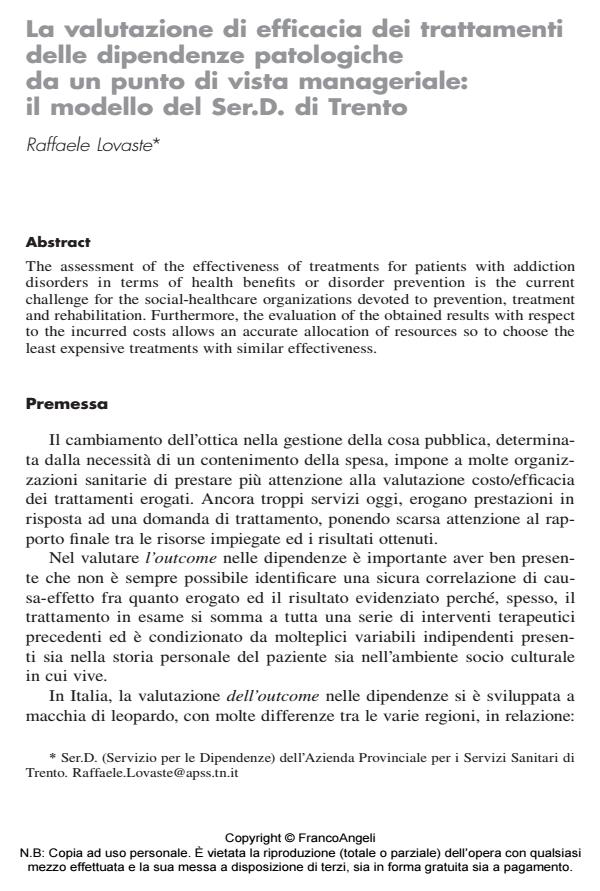La valutazione di efficacia dei trattamenti delle dipendenze patologiche da un punto di vista manageriale: il modello del Ser.D. di Trento
Journal title SICUREZZA E SCIENZE SOCIALI
Author/s Raffaele Lovaste
Publishing Year 2014 Issue 2014/3
Language Italian Pages 12 P. 76-87 File size 105 KB
DOI 10.3280/SISS2014-003006
DOI is like a bar code for intellectual property: to have more infomation
click here
Below, you can see the article first page
If you want to buy this article in PDF format, you can do it, following the instructions to buy download credits

FrancoAngeli is member of Publishers International Linking Association, Inc (PILA), a not-for-profit association which run the CrossRef service enabling links to and from online scholarly content.
The assessment of the effectiveness of treatments for patients with addiction disorders in terms of health benefits or disorder prevention is the current challenge for the social-healthcare organizations devoted to prevention, treatment and rehabilitation. Furthermore, the evaluation of the obtained results with respect to the incurred costs allows an accurate allocation of resources so to choose the least expensive treatments with similar effectiveness.
Raffaele Lovaste, La valutazione di efficacia dei trattamenti delle dipendenze patologiche da un punto di vista manageriale: il modello del Ser.D. di Trento in "SICUREZZA E SCIENZE SOCIALI" 3/2014, pp 76-87, DOI: 10.3280/SISS2014-003006